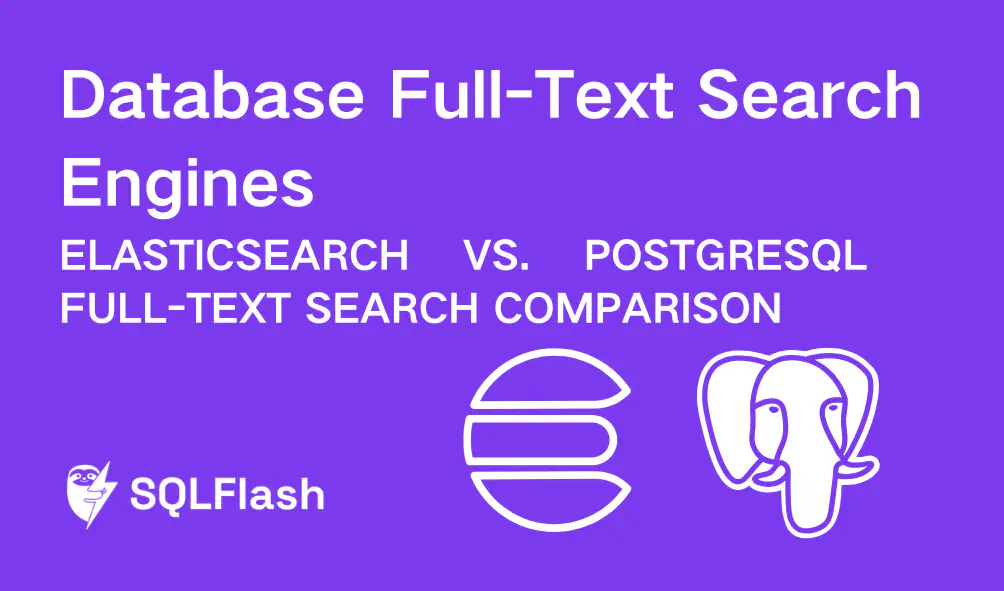Database Full-Text Search Engines: Elasticsearch vs. PostgreSQL Full-Text Search Comparison


In the era of big data and information retrieval, full-text search has become an indispensable capability in database applications. Facing complex text, high-concurrency queries, and massive data demands, Elasticsearch (ES) and PostgreSQL (PG)’s built-in full-text search (Full-Text Search, FTS) are the two most widely discussed solutions. This article systematically compares their principles, features, and application scenarios to assist in practical selection and architectural optimization.
Full-text search refers to word- or phrase-level search and matching across large volumes of documents, articles, or arbitrary text. It goes beyond exact matching to support fuzzy searches, synonyms, relevance ranking, tokenization, and other intelligent retrieval features.
Common use cases include site search, log analysis, recommendation systems, and business data analytics.
Elasticsearch is an open-source, distributed search and analytics engine built on the Apache Lucene core. It stores and retrieves data in JSON document format, making it naturally suited for massive, complex search needs involving unstructured and semi-structured text.
Core Advantages:
Challenges and Limitations:
PostgreSQL has had native full-text search capabilities since version 8.3, implemented using the tsvector and tsquery data types, and is widely integrated into structured data management.
Core Advantages:
ts_rank/ts_rank_cd).Challenges and Limitations:
| Feature/Engine | Elasticsearch | PostgreSQL FTS |
|---|---|---|
| Data Model | Document-based, JSON | Relational, table structure |
| Horizontal Scaling/Distribution | Supported, suitable for massive data | Supports master-slave, limited distribution |
| Vector/Hybrid Search | Supports full-text, vector, and structured hybrid search | Primarily full-text/structured |
| Query Capabilities | Rich DSL syntax, high relevance, autocomplete, aggregation, similarity search, faceting, recommendations | Basic search, tokenization, phrases, Boolean logic, relevance scoring |
| Transaction Consistency | Eventual consistency | ACID strong consistency |
| Configuration and Maintenance | Requires separate deployment and maintenance, high complexity | Built into the database, easy to maintain |
| Data Synchronization | Requires synchronization with the primary database, common delays | Data-consistent, real-time |
| Suitable Scenarios | Complex text search, big data analytics, e-commerce, log services | Small-to-medium applications, CMS, transactional application search |
Full-text search represents the intelligent evolution of database systems. PostgreSQL’s native FTS emphasizes integration, ease of maintenance, and transactional guarantees, making it ideal for lightweight-to-medium data and management applications. Elasticsearch, on the other hand, excels in horizontal scalability, complex search semantics, and a rich development ecosystem, dominating the field of complex text search.
Selection should balance data volume, concurrency needs, and operational capabilities. Flexible combinations can yield the best business outcomes.
With SQLFlash’s intelligent SQL optimization and full-text search tools, data retrieval experiences and business response speeds can be further enhanced, injecting new vitality into websites and systems.
SQLFlash is your AI-powered SQL Optimization Partner.
Based on AI models, we accurately identify SQL performance bottlenecks and optimize query performance, freeing you from the cumbersome SQL tuning process so you can fully focus on developing and implementing business logic.
Join us and experience the power of SQLFlash today!.